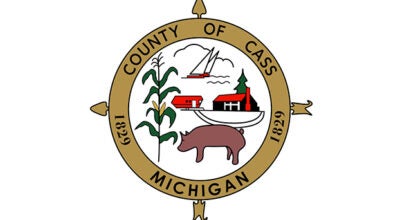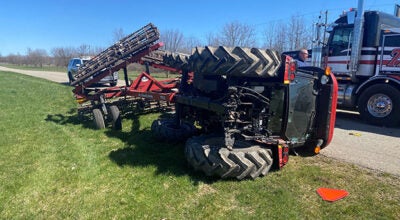Conservation district seeking grant money for expanded water monitoring
Published 11:28 am Thursday, March 3, 2016
After dipping its toes into the water last fall, the Cass County Conservation District is looking to dive head first into its efforts to monitor the health of the county’s waterways.
The organization is currently putting together a grant application to the Michigan Department of Environmental Quality’s MiCorps program in hopes of expanding its recently introduced water monitoring initiative. The district is looking to use the added funding to pay for the observation and study of several county bodies of water over the next two years, including those Dowagiac Creek, Dowagiac River, Rocky River, Christiana Creek, and Cobus Creek, said CCCD Director Justin Miller.
The district introduced the program alongside the St. Joseph County Conservation District in October, gathering volunteers to help them collect and study aquatic invertebrate samples from waters at Fred Russ Forest County Park. By collecting and counting these types of insects, the district can get a better understanding of the levels of pollution inside a particular stretch of water, as different creatures have different tolerance to chemicals and substances can have detrimental effects on water quality, Miller said.
“When you see more of those very sensitive species, you know the water is in good condition,” Miller said.
The kickoff last year was more meant to train volunteers and gauge the community’s interest in supporting such a monitoring program, Miller said. With additional funding, the program will be expanded to between seven to 10 sites across the county, with volunteers collecting and studying samples twice a year.
The organization is applying for funding between $10,000 and $12,000, with the district having to cover at least a 25 percent match. This match isn’t necessarily measured in just money — volunteer hours, equipment loans and other non-monetary resources can also be counted toward the match, Miller said.
“You’ll score more points the higher amount of matching funds you have,” Miller said. “It makes your program more sustainable and shows you have a lot of community support for it.”
The district is looking to have between 20-25 volunteers to help perform the field work, with several others performing the sorting and laboratory duties, should the district receive funding to roll out the second phase, Miller said. With volunteers with Southwestern Michigan College, the Pokagon Band and other local entities helping out with the fall study, Miller is hopeful they will be able to have the labor to pull off the expanded duties, he said.
“There’s a lot of environmentally-minded people in the area that are looking to help, they just don’t know where or how to do so yet,” Miller said.
The district expects to know whether or not it will receive funding from the state by summer — should they be awarded grant funding, they could roll out phase two by fall, Miller said.
People interested in volunteering can contact the district at (269) 445-8641.






